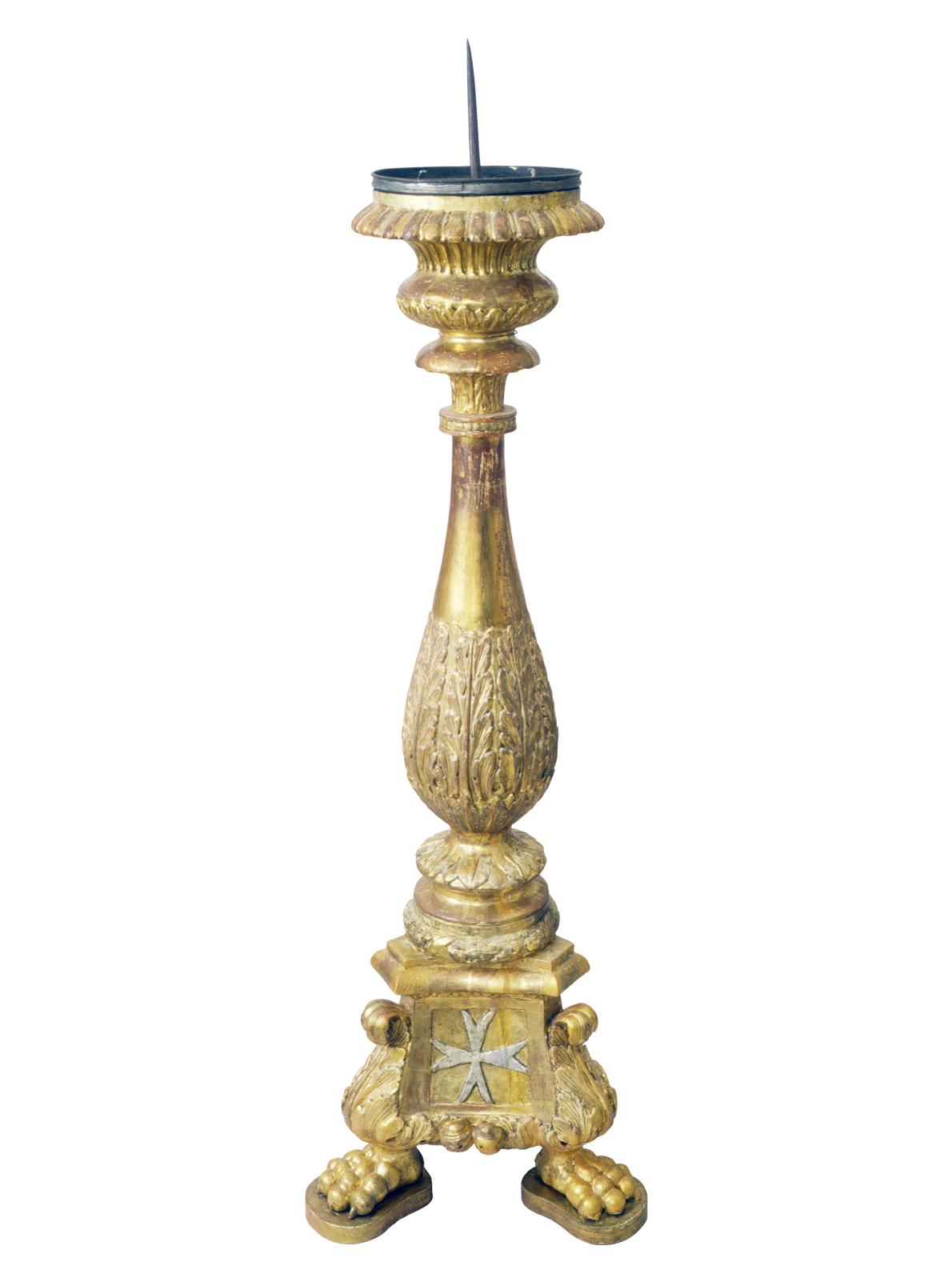CANDLEHOLDERS FROM THE MALTESE CHAPEL

The candle holders were made by an Italian court carpenter and carver Telesforo Bonaveri. In 1798–1800 an Italian architect Giacomo Quarenghi designed those for the Maltese chapel – the Temple of the knights of the Order of Malta.
More information...The Order of Malta is the oldest spiritual and knight order of the Roman Catholic Church. It was created in the second half of the XI Century in Palestine as the Jerusalem Order of the Brotherhood of St.John. Initially the Order provided shelter and treatment to sick or wounded pilgrims who came from Europe to worship the Holy sepulcher. Later to the monastic vows were added the duty to fight the infidels, to protect and defend the Holy land. After the crusaders were ousted from the Middle East the Order moved its Headquarters to the island of Cyprus (1291), later in 1306–1308 to the island of Rhodes and in 1530 to the island of Malta. Since that time it was named the Order of Malta.
In 1797, the Great Priory of the Order was established in Russia, and Emperor Paul I accepted the title of its Protector (Patron). After Napoleon's troops took over Malta (June 1798), Paul granted the knights of Malta asylum in St.Petersburg and accepted the title of Grand Master. In 1798, the Manifesto announced the establishment of the Order of St.John of Jerusalem in favor of the Russian Nobility. At the same time the Maltese Cross appeared in the Russian state emblem.
The Russian Priory of the Order was granted with the Vorontsov Palace, next to which in 1798–1800 the Court architect Giacomo Quarenghi built the Catholic Church of St.John the Baptist – The Maltese Chapel. It was intended for meetings of the Order and keeping of the Order’s Regalia. Making interiors Quarenghi also designed furniture, organically inserting it in the architectural appearance of the hall, harmoniously combining furniture with architectural forms. After the death of Paul I, the chapel existed as a Catholic Church.
